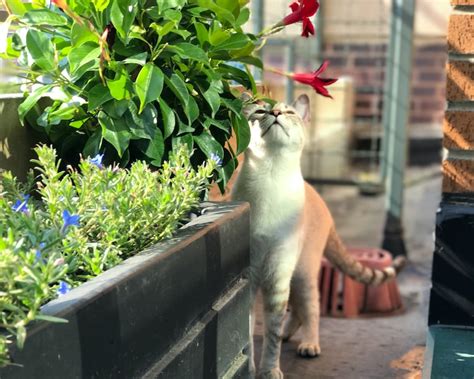Designing a Wildlife-Friendly Balcony Garden: Tips for Urban Gardening Success
Creating a wildlife-friendly balcony garden is an exciting opportunity to promote biodiversity in urban areas. Whether you have limited space or simply want to connect more with nature, balcony gardening offers a way to invite birds, bees, and butterflies into your outdoor living space. In this guide, we’ll walk through how to design a garden that supports local wildlife, provides seasonal interest, and thrives even in small spaces.
Key Concepts in Wildlife-Friendly Balcony Gardening
Before you get started, it’s essential to understand a few key concepts that form the foundation of a successful wildlife garden.
- Biodiversity: The variety of plant and animal species that coexist in an ecosystem.
- Container Gardening: A method of growing plants in pots or containers, ideal for limited spaces like balconies.
- Urban Gardening: The practice of growing plants in an urban setting, focusing on maximizing small, often vertical, spaces.
- Plant Health: Ensuring that the plants are well-cared for to attract and support local wildlife.
Historical Context of Urban and Balcony Gardening
Urban gardening has a long history, especially in cities with limited green space. During World War II, Victory Gardens became popular, as people were encouraged to grow their own food. Today, balcony gardening is a modern twist on this tradition, adapted to support biodiversity rather than just human consumption. The focus has shifted towards designing spaces that cater not only to humans but also to the local wildlife population.
Current State Analysis: Why Balcony Gardens Matter for Wildlife
With urbanization on the rise, wildlife habitats are increasingly fragmented. Balconies offer small but valuable oases for animals and insects in cities. A thoughtfully designed wildlife-friendly balcony garden can provide food, shelter, and breeding spaces for various species. The key challenge in urban gardening is balancing aesthetic appeal with ecological function. However, a successful wildlife garden does not need to sacrifice beauty—plants that attract pollinators like bees and butterflies can add vibrant colors and textures to your balcony.
Practical Applications: Designing a Wildlife Garden on Your Balcony
Follow these steps to create a wildlife-friendly balcony garden:
- Choose Native Plants: Native plants are adapted to the local climate and soil, making them easier to maintain and more beneficial to local wildlife.
- Include Pollinator Plants: Flowers such as lavender, sunflowers, and daisies attract bees, butterflies, and other pollinators. You can also consider herbs like mint and rosemary, which offer nectar and fragrance.
- Provide Water Sources: A small birdbath or a shallow dish of water will attract birds and insects, ensuring that they stay hydrated.
- Use Vertical Space: Use trellises and hanging baskets to maximize your balcony space, offering both more plants and more shelter options for wildlife.
- Create Shelter: Add birdhouses, bug hotels, or small piles of logs to provide shelter for birds, bees, and other creatures.
Case Studies: Successful Wildlife-Friendly Balcony Gardens
| Location | Key Features | Wildlife Attracted |
|---|---|---|
| New York City | Native grasses, birdbath, container trees | Finches, bees, butterflies |
| London | Pollinator-friendly flowers, bug hotel, vertical planters | Bees, ladybugs, small birds |
| Tokyo | Herbs, water feature, compact shrubs | Dragonflies, sparrows, moths |
Stakeholder Analysis: Who Benefits from Wildlife-Friendly Balcony Gardens?
Balcony gardens benefit not only the wildlife they attract but also the people who create them. Urban gardeners enjoy the mental and physical health benefits of working with plants. Neighbors and communities benefit from increased biodiversity and aesthetic appeal. Moreover, city governments may recognize the ecological importance of urban green spaces, potentially supporting projects through grants or other incentives.
Implementation Guidelines for Wildlife-Friendly Balcony Gardens
To ensure that your wildlife-friendly balcony garden succeeds, follow these guidelines:
- Start Small: Begin with a few native plants and gradually expand your garden as you learn more about the needs of local wildlife.
- Research: Study the local fauna to understand which plants and structures best support them.
- Monitor Plant Health: Ensure that your plants receive the right amount of sunlight, water, and nutrients to stay healthy and continue attracting wildlife.
- Adjust Seasonally: Update your garden with plants that bloom in different seasons to provide year-round interest and food sources for wildlife.
Ethical Considerations in Wildlife Gardening
When designing a wildlife-friendly balcony garden, consider the potential ethical impacts. Avoid invasive species that may harm local ecosystems. Furthermore, refrain from using chemical pesticides, which can harm pollinators and other wildlife. Organic methods such as neem oil or introducing natural predators are safer alternatives. It’s also essential to ensure that any water sources you provide are kept clean to avoid spreading diseases among visiting animals.
Limitations and Future Research in Urban Wildlife Gardening
While balcony gardens can play a significant role in supporting urban wildlife, their impact is naturally limited by the small space available. Research into how to maximize these small areas for ecological benefit is still in its early stages. Future studies could explore innovative designs and plant combinations that attract a broader range of species. Additionally, more work is needed to quantify the long-term benefits of wildlife-friendly balcony gardens, such as their role in enhancing biodiversity corridors in cities.
Expert Commentary
Designing a wildlife-friendly balcony garden requires a balance between beauty and ecological function. Experts agree that urban gardens, even in the smallest spaces, can contribute to broader environmental goals by creating pockets of biodiversity. “The key is to select plants that are native and suited to the local ecosystem,” notes Dr. Jane Wilson, an expert in urban ecology. “We need to rethink our relationship with nature in cities—balconies offer a unique way to bridge that gap.”
In addition, horticulturalist Michael Green emphasizes the need for adaptability: “Urban environments change rapidly, and so do the challenges they pose to both plants and wildlife. Seasonal tips and smart plant choices are critical for ensuring that your balcony remains a thriving wildlife haven year-round.”


